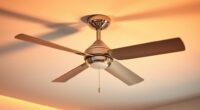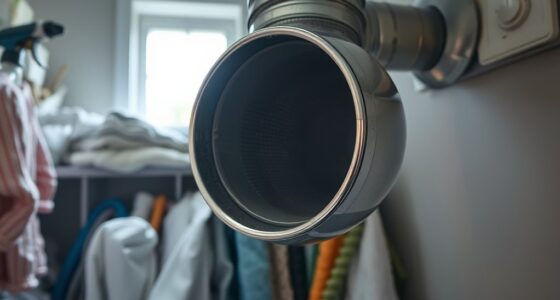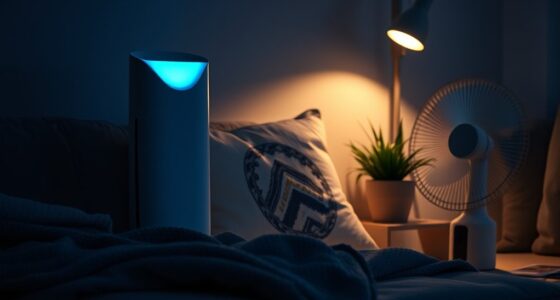To cut allergens without overfiltering, focus on regular grooming of your pets, like brushing and bathing, to reduce dander. Keep surfaces clean with frequent vacuuming using HEPA filters and wash pet bedding often. Create pet-free zones, especially in bedrooms, and improve ventilation with fans or natural airflow. Consistently maintaining these routines helps manage allergens effectively, and if you continue exploring, you’ll discover more targeted methods to create a healthier, pet-friendly environment.
Key Takeaways
- Regularly groom pets with gentle, pet-specific shampoos to reduce dander production without overusing harsh products.
- Use HEPA-filtered vacuum cleaners and air purifiers to efficiently remove airborne allergens without excessive filtering.
- Create designated pet-free zones and enforce boundaries to minimize allergen spread in high-traffic indoor areas.
- Maintain consistent cleaning routines, including frequent washing of pet bedding and surfaces, to prevent allergen buildup.
- Enhance ventilation with exhaust fans and open windows to naturally dilute indoor pet allergens without relying solely on filters.
Understanding Pet Dander and Its Impact on Indoor Air Quality

Pet dander consists of tiny skin flakes shed by animals with fur or feathers, and it’s a common cause of indoor allergies. These microscopic particles become airborne allergens that can linger in your home’s air, triggering allergy symptoms. Pet saliva often sticks to fur and skin, and when pets lick themselves, the saliva dries and becomes part of the dander. As these allergens become airborne, they settle on surfaces or float in the air, making it easy for you to inhale them. The presence of pet saliva on fur increases allergen levels, especially if your pet spends a lot of time indoors. Understanding how pet dander and saliva contribute to indoor air quality helps you take targeted steps to reduce allergen exposure and breathe easier at home. Using effective air purification technologies, such as HEPA filters, can further help reduce airborne pet allergens and improve indoor air quality.
Choosing the Right Pet Grooming Routine to Minimize Allergens
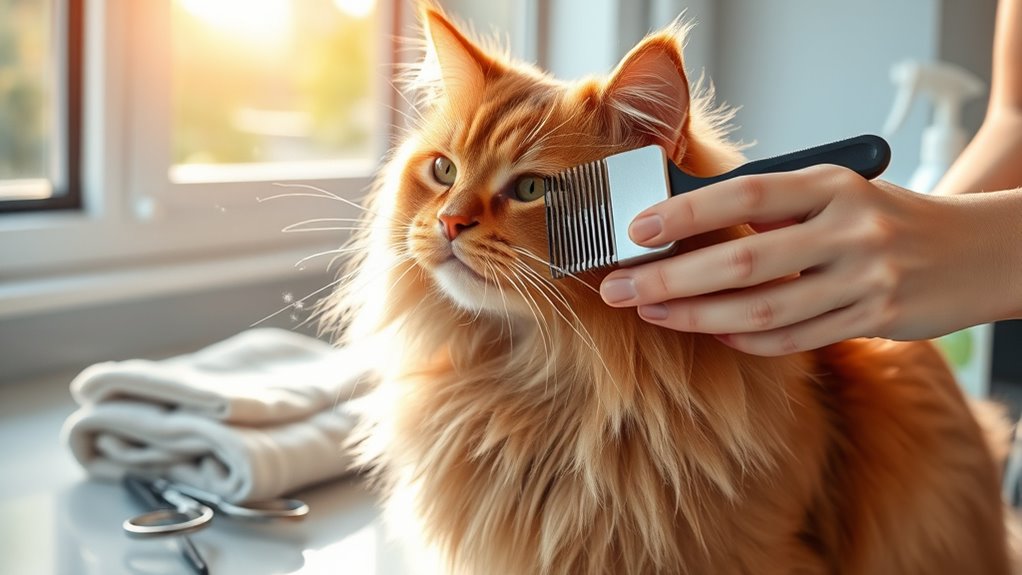
Regular grooming is essential for reducing pet dander and minimizing allergens in your home. Choosing the right grooming routine depends on your pet’s coat type and using effective grooming techniques. For short-haired pets, brushing once a week with a soft brush helps remove loose hair and dander. Long-haired pets benefit from daily brushing to prevent matting and trap dander closer to the skin. For curly or wiry coats, regular stripping or trimming can reduce shedding. Consider these tips:
- Select grooming tools suited for your pet’s coat type to ensure thorough cleaning.
- Use gentle, pet-specific shampoos that help reduce dander without irritating skin.
- Schedule regular baths to keep dander levels low and maintain a healthy coat.
- Keep in mind that allergen management is a continuous process that can significantly improve your living environment.
Effective Cleaning Practices to Reduce Dander Accumulation
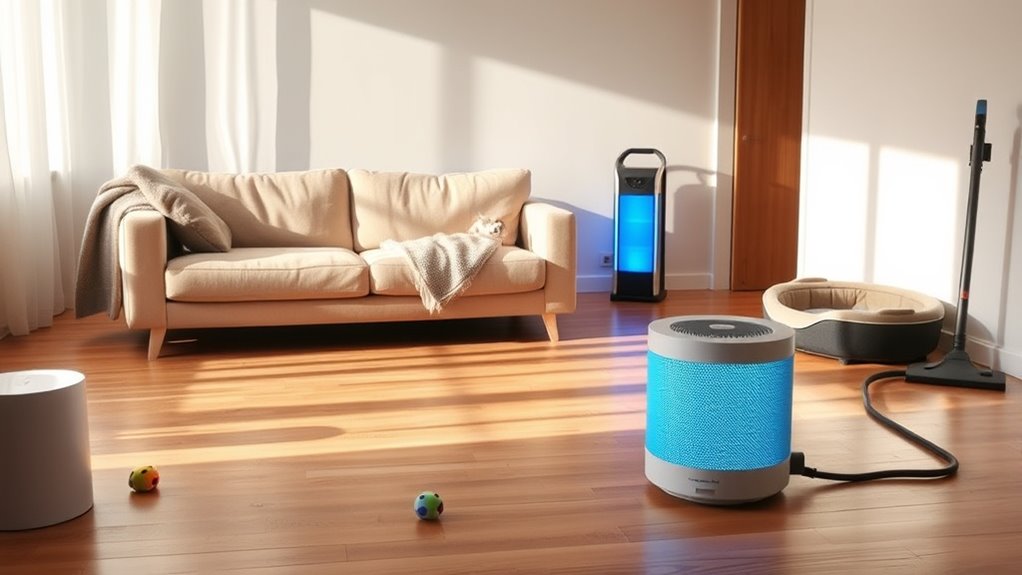
Implementing effective cleaning practices is the key to controlling pet dander buildup in your home. Regular vacuuming with a HEPA filter, dusting surfaces, and washing pet bedding help reduce allergens. Focus on pet hair management by cleaning frequently to prevent dander from settling. Using allergen-proof bedding can trap dander and limit exposure. Keep high-traffic areas tidy and wash linens weekly. Consider air purifiers to filter airborne pet dander. Staying aware of cybersecurity vulnerabilities related to smart home devices can further protect your environment.
Creating Pet-Free Zones for Safer Indoor Spaces
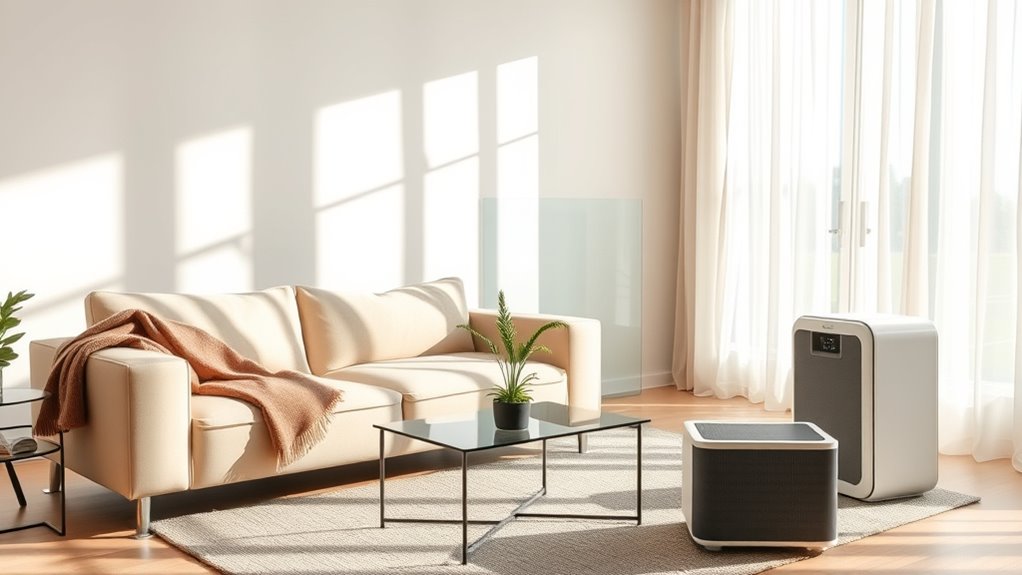
Creating pet-free zones in your home can considerably reduce allergen exposure and improve indoor air quality. Designate specific areas, like bedrooms or home offices, where pets are not allowed. This helps contain dander and gives allergy sufferers a safe space. Before establishing zones, consider scheduling a vet visit for your pet and allergy testing to understand sensitivities. Use barriers such as baby gates or closed doors to enforce boundaries. Keep these zones clean by vacuuming regularly and using air purifiers nearby. Incorporating air quality management techniques can further enhance the effectiveness of these zones. Communicate boundaries clearly with family members and visitors. By creating designated pet-free areas, you limit allergen spread and create safer indoor environments, making allergy management easier and more effective.
Implementing Smart Air Circulation and Ventilation Strategies

To effectively reduce pet dander in your home, smart air circulation and ventilation strategies can make a significant difference. Proper air exchange ensures that airborne pet allergens are continually removed, preventing buildup. Use ventilation systems that promote consistent airflow, such as exhaust fans in bathrooms and kitchens, to remove dander-laden air quickly. Consider installing energy-efficient HVAC systems with high-quality filters that support better air exchange without overfiltering. Regularly changing these filters maintains ideal performance. Additionally, strategically opening windows when weather permits allows fresh air to circulate, diluting pet dander. Implementing automation in ventilation systems can optimize air quality management seamlessly. By integrating these ventilation practices, you improve indoor air quality, reduce allergen concentration, and create a healthier environment for allergy sufferers.
Incorporating Natural Remedies and Allergist-Recommended Products
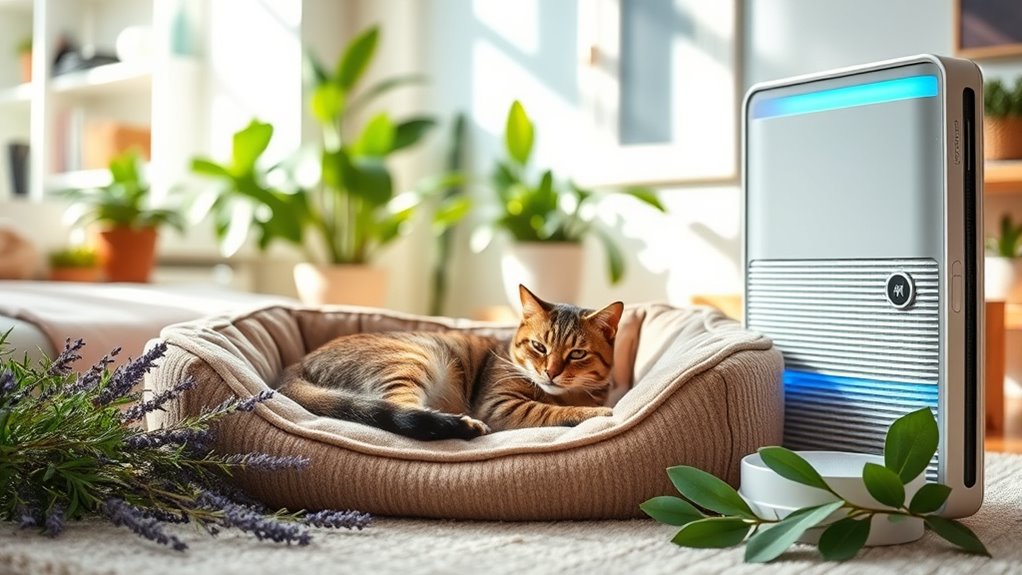
After optimizing your home’s ventilation to reduce airborne pet allergens, exploring natural remedies and allergist-recommended products can further alleviate allergy symptoms. Herbal remedies like butterbur and quercetin may help reduce inflammation and allergic responses. Using allergen barriers, such as pillow and mattress covers, can prevent pet dander from settling into your bedding. Consider incorporating nasal rinses to clear allergens from your nasal passages. Additionally, air purifiers with HEPA filters, recommended by allergists, can trap pet dander particles effectively. Understanding indoor air quality and its impact on health can help you make informed decisions about your allergy management. These natural remedies and products work together to create a multi-layered defense against pet allergens, enhancing your comfort indoors. Remember, always consult with your allergist before trying new herbal remedies to ensure safety and effectiveness.
Maintaining Consistency: Building a Pet-Friendly Yet Allergy-Conscious Home
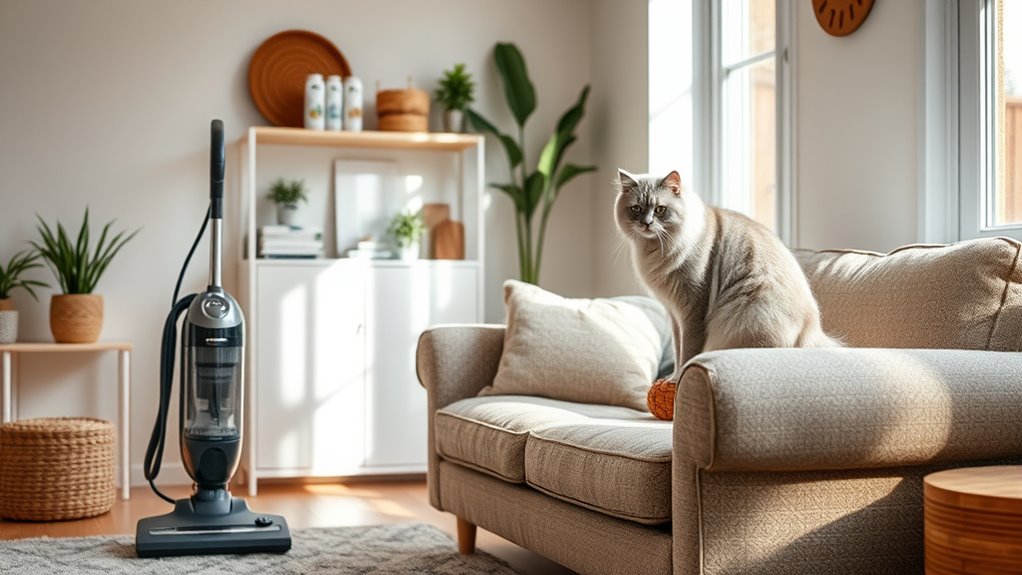
Maintaining consistency is key to balancing a pet-friendly environment with allergy management. You need to observe your pet’s behavior closely, noting how they interact with different spaces and stimuli. Setting regular routines helps minimize unpredictable pet behavior that could stir up allergy triggers, such as shedding or dander dispersal. Establish designated areas where your pet can relax, and enforce uniform cleaning habits to reduce allergen buildup. Consistency in grooming, cleaning, and behavior management prevents sudden spikes in allergens, making your home more comfortable for everyone. By creating predictable routines, you ensure your pet remains happy while keeping allergy triggers under control. Additionally, understanding the importance of self-awareness in managing pet-related allergies can lead to more effective strategies and a balanced home environment. This balanced approach fosters a harmonious home where both pet behavior and allergen levels stay manageable.
Frequently Asked Questions
Are There Specific Breeds Less Likely to Trigger Allergies?
Yes, hypoallergenic breeds are less likely to trigger allergies. Breeds like Bichon Frises, Poodles, and Portuguese Water Dogs produce fewer allergens and shed less, making them better options for allergy sufferers. To further reduce allergens, adopt allergen reducing strategies like regular grooming, frequent cleaning, and using HEPA filters. These steps help minimize pet dander in your home, allowing you to enjoy a pet-friendly environment with fewer allergy symptoms.
How Often Should I Replace Air Filters for Optimal Allergy Control?
Replacing your air filter is like changing the sheets on your bed—freshening up for better comfort. For maximum allergy control, you should follow a filter replacement schedule of every 30 to 60 days, depending on your home’s needs. This ensures consistent allergen removal frequency, preventing buildup of pet dander and dust. Regular changes keep indoor air cleaner, helping you breathe easier and reducing allergy symptoms effectively.
Can Diet Changes Reduce Pet Dander Production?
Diet changes can help reduce pet dander production by improving your pet’s overall health and skin condition. A balanced diet with proper nutrition impacts their skin’s health, potentially decreasing dander. By focusing on allergy mitigation through nutritional impact, you may notice less allergen release. Consult your vet to identify suitable foods or supplements that support your pet’s skin, ultimately helping to manage allergy symptoms for both of you.
What Are the Best Non-Toxic Cleaning Products for Allergy Sufferers?
You should choose natural disinfectants, eco-friendly sprays, and unscented cleaning products to minimize allergens. Look for options free of harsh chemicals, fragrances, and dyes, ensuring they’re safe for allergy sufferers. Regularly clean surfaces, vacuum with HEPA filters, and wash bedding frequently to reduce pet dander. By prioritizing non-toxic, eco-friendly cleaning solutions, you create a healthier environment and lessen allergy symptoms without overfiltering.
How Can I Train Pets to Minimize Dander Shedding?
You can train your pets to shed less by implementing consistent behavior modification and grooming routines. Start by rewarding calm behavior and discouraging scratching or excessive shedding. Regular brushing helps remove loose hair and dander, while positive reinforcement encourages your pet to stay clean and calm. Establish a grooming schedule, and always praise your pet during grooming to create a positive association, reducing stress-related shedding and dander.
Conclusion
By following these tips, you can strike a balance between loving your pet and breathing easy. Think of your home as a delicate dance—each step carefully timed to reduce allergens without sacrificing companionship. With consistent grooming, smart cleaning, and good airflow, you’ll create a sanctuary where pet love and allergy relief move in harmony. Remember, a little effort now keeps the air clean and your bond strong for years to come.

